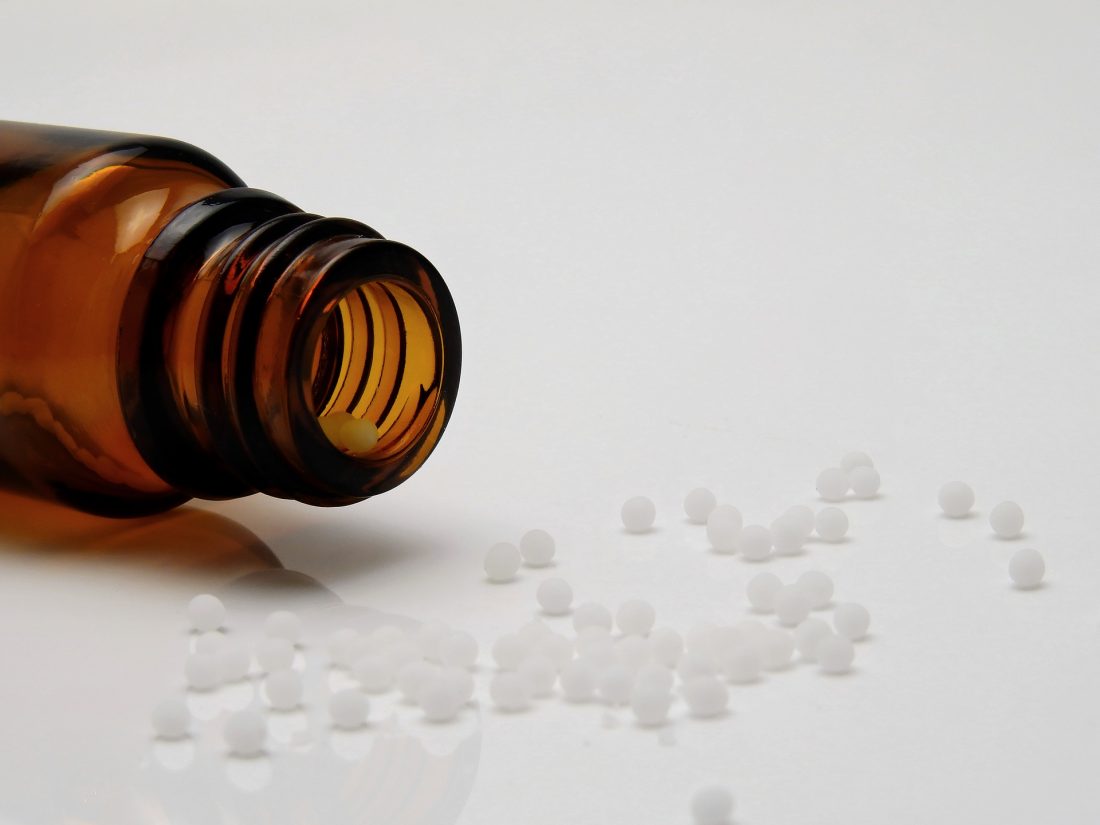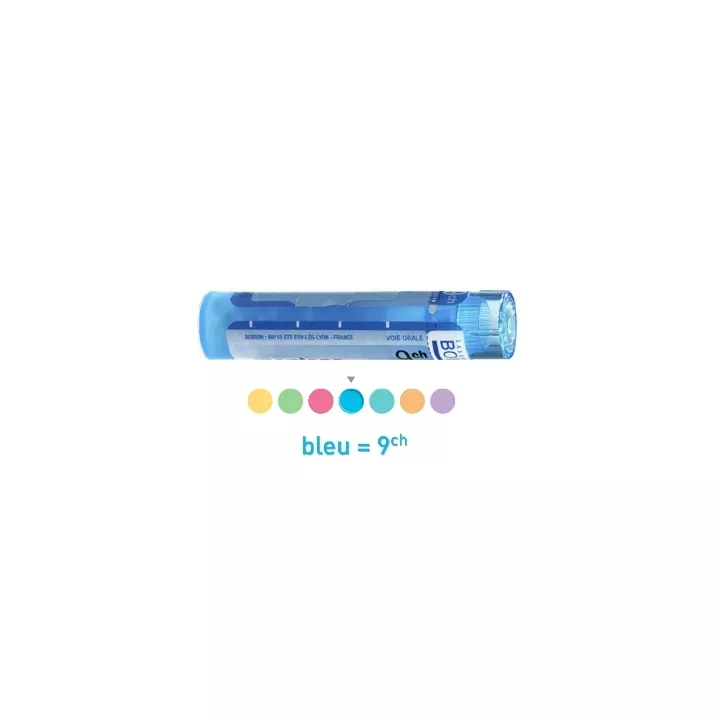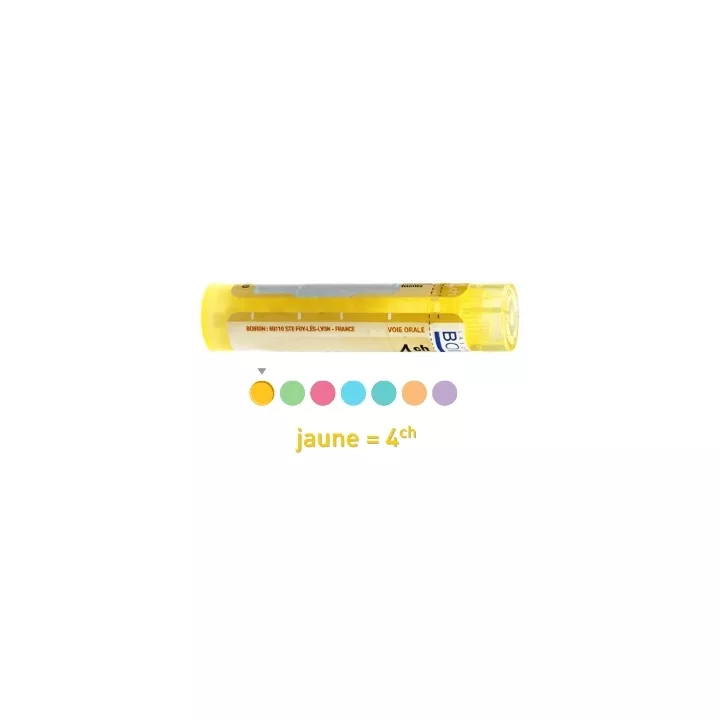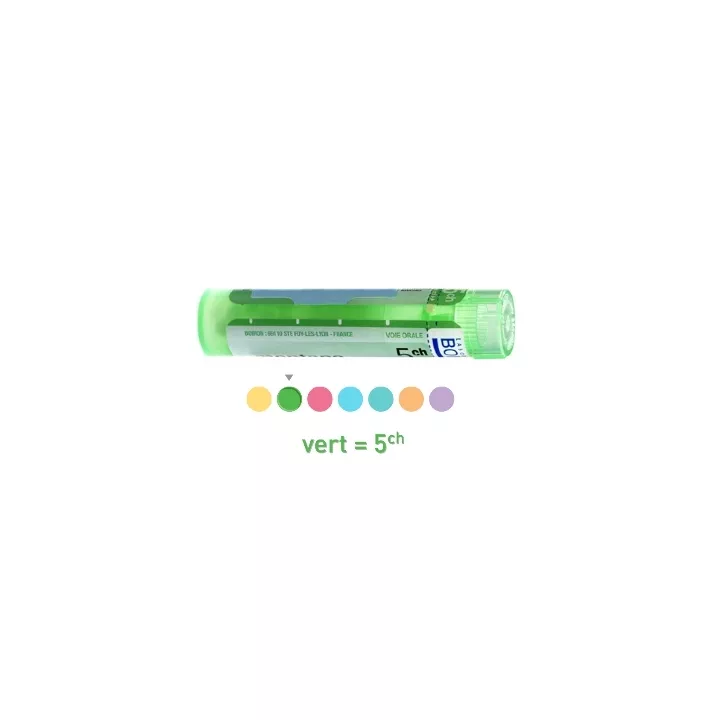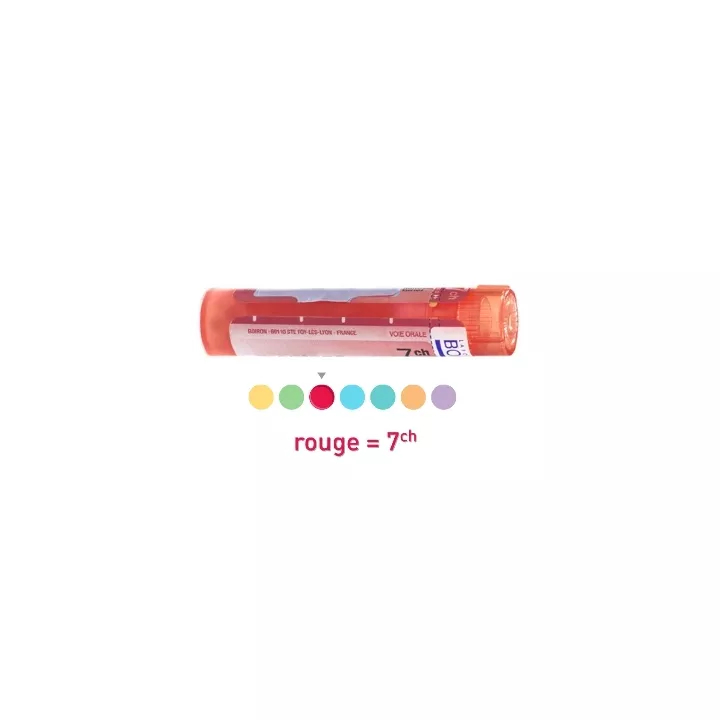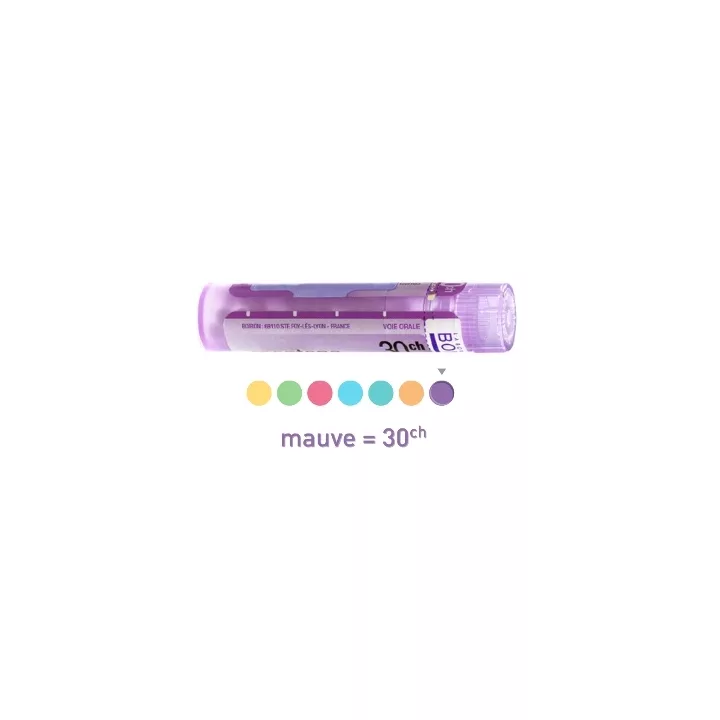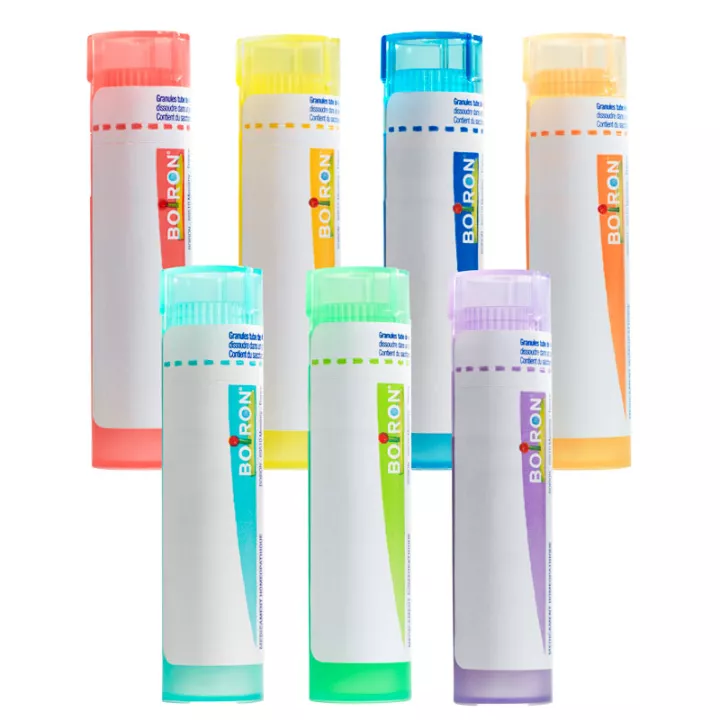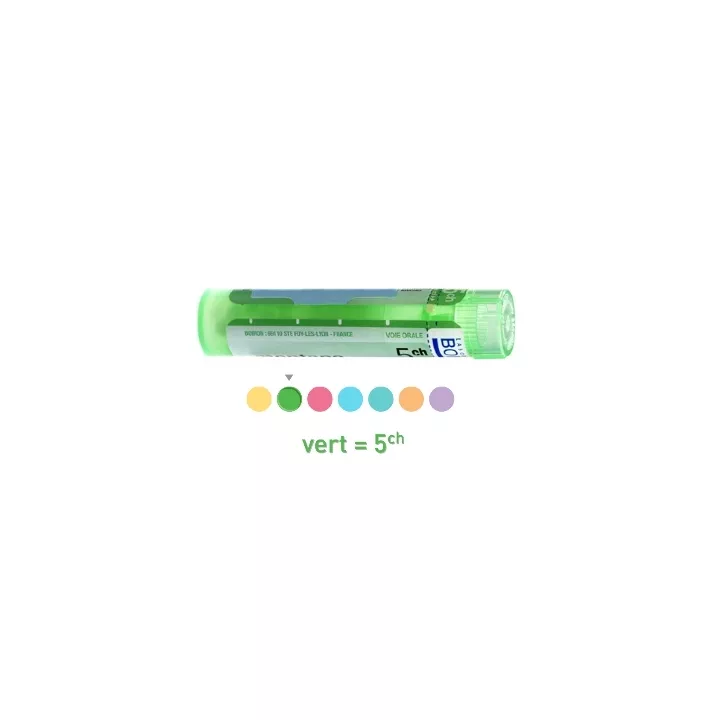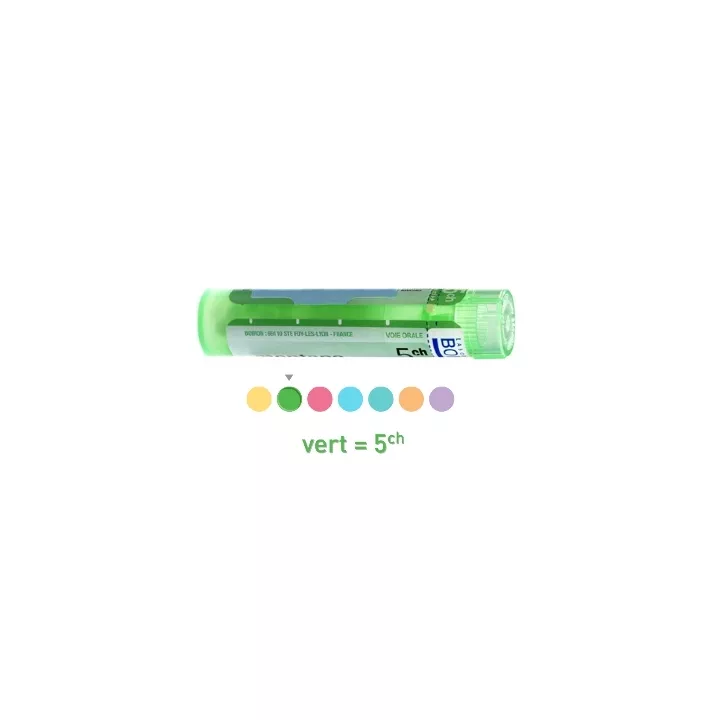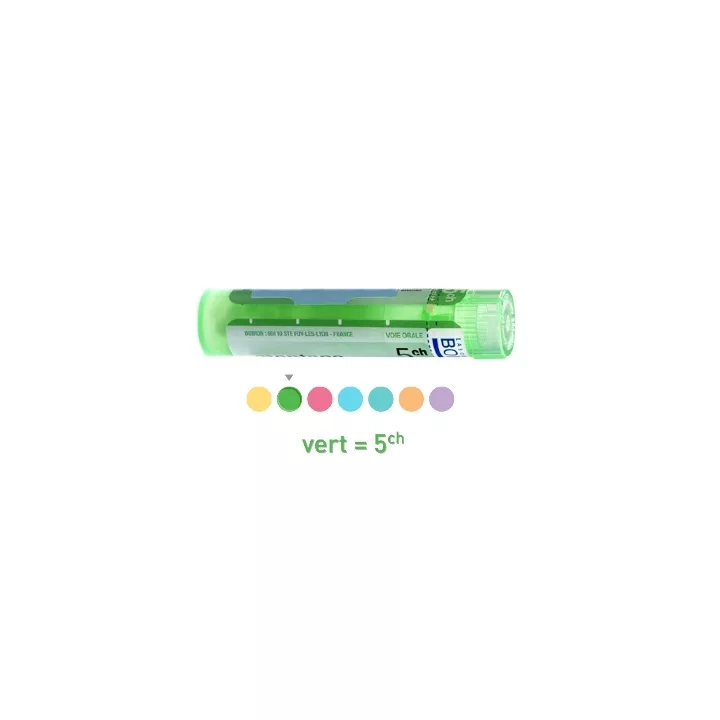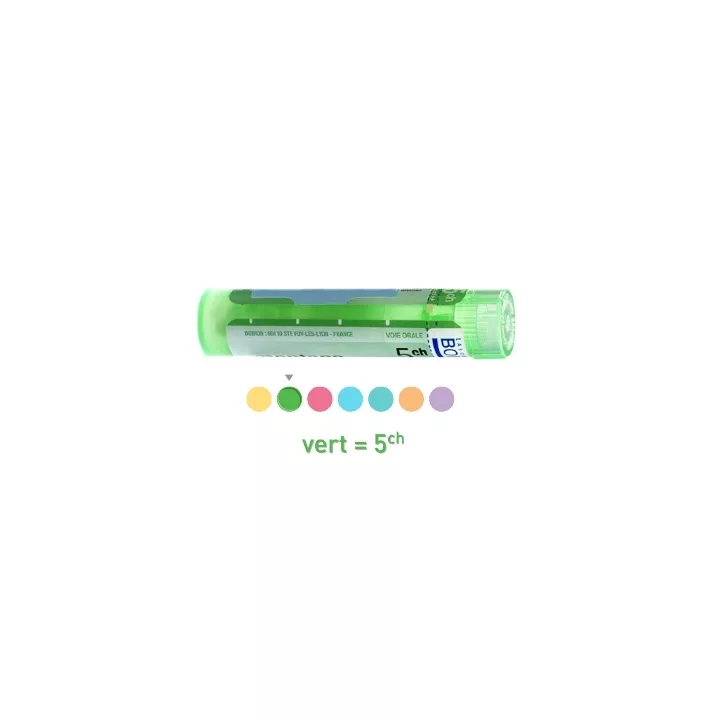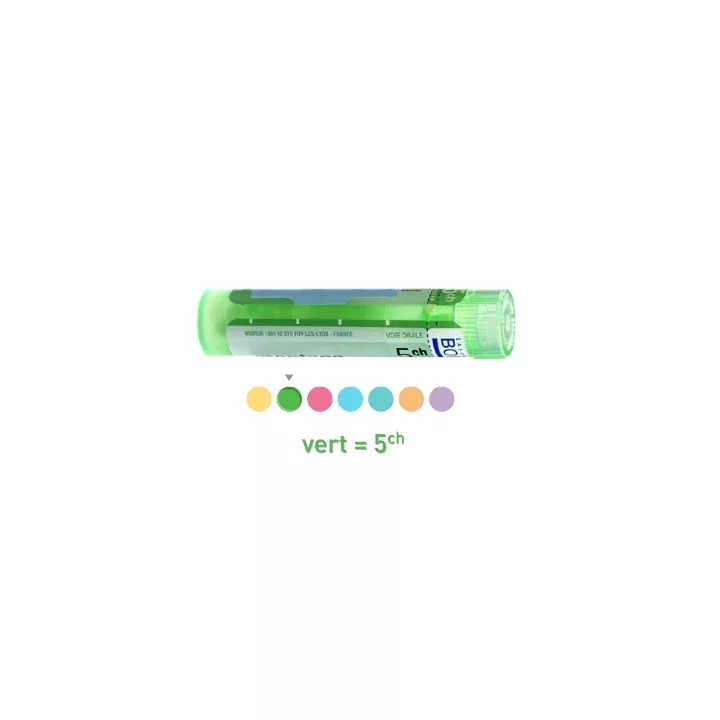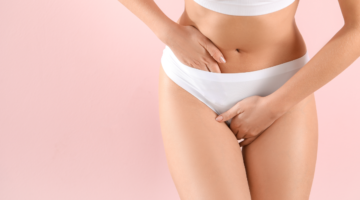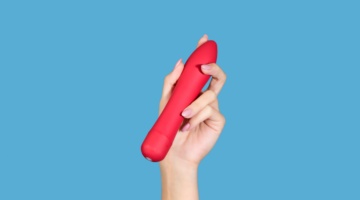Kreosotum 5CH, 7CH, 9CH, 15CH, 30CH Boiron homeopathic granules
Registered medicine: EH01696
Origin : Vegetal
Available in Korsakovian dilutions of 200K, 1,000K, 10,000K
Homeopathic benefits of Kreosotum for gynecological disorders
Kreosotum is a homeopathic remedy derived from beech extract, used to treat various gynecological disorders. Kreosotum is very gentle and acts deep down without harming the body. Let's discover the benefits of Kreosotum homeopathy for women.
Kreosotum is used in homeopathy to treat a wide range of gynaecological disorders. It acts gently without harming the body, as it is made entirely from the extract of the beech plant. Kreosotum is used in various dilutions. To treat acute illnesses, Kreosotum is recommended in low dilution, as the aim is to treat a well-defined organ. High-dilution remedies are suitable for chronic illnesses, for in-depth treatment.
Treating gynaecological disorders with Kreosotum
Kreosotum is particularly indicated for the treatment of many gynaecological conditions. It is often prescribed for heavy vaginal discharge, itching, burning and pain during menstruation, vaginal infections, vaginal dryness, cystitis, urinary incontinence and more.
Thanks to its antiseptic properties, Kreosotum can also help treat urinary tract infections. It is also effective in relieving menstrual pain, fatigue and depression that can occur during menstruation.
Kreosotum is gentle and safe
Kreosotum is a very gentle homeopathic remedy that works deep down without harming the body. It is made entirely from the extract of the beech plant, and therefore contains no chemicals.
What's more, Kreosotum has no undesirable side effects. However, it is important to respect the doses prescribed by your homeopath and not to exceed the recommended duration of treatment.
Indications and dosage
Homeopathic medicines can be used for a variety of symptoms, so it's not possible to determine the indications and dosage of a specific preparation. The homeopathic physician selects the appropriate medicine, dilution and dosage according to the patient's state of health and characteristic symptoms.
Main indications in gynaecology
Kreosotum is indicated in gynecology to treat vaginitis and cervicitis. These are recognized by the presence of yellow, fetid leucorrhoea, irritating the vaginal lips. The mucous membranes bleed at the slightest touch, and there is a pressing need to urinate. It can also be used to treat metorrhagia, when bleeding occurs outside the menstrual period. Bleeding can be intermittent, sometimes accompanied by a foul odor, and the discharge worsens at bedtime. Kreosotum can also be used to treat menorrhagia, characterized by abnormalities such as abundant blood flow during menstruation.
Kreosotum is also used to treat symptoms associated with menstruation in women. Appearing before menstruation, these symptoms can include headaches, swelling of the abdomen and sometimes irritability.
Menstruation is sometimes accompanied by flatulence, constipation and ringing in the ears. White discharge and stomach ache may occur after menstruation. Kreosotum is also recommended for regulating early menstruation accompanied by pain and abundant black blood.
Other indications for Kreosotum include genital tract infections, menopausal disorders and pregnancy. For example, it is prescribed for women suffering from pain, burning and itching of the vagina and labia. It is used to treat acid-yellow leucorrhoea with a distinctive odour. Kreosotum is also indicated to relieve menopausal disorders accompanied by light bleeding and irritation of the cervix.
Other therapeutic applications
Kreosotum is widely used to treat gynaecological problems, such as infections and inflammations characterized by unpleasant secretions. It is also effective against dental affections, notably early tooth decay in children and dental pain associated with abundant secretions. On the gastrointestinal front, Kreosotum helps relieve symptoms of gastritis and ulcers, where excessive secretions are a common problem.
Directions for use
Do not touch homeopathic granules with your fingers. Use a mint-free toothpaste (such as Homéodent Boiron, which is compatible with homeopathic granules).
Kreosotum is a gentle, effective homeopathic remedy for many gynaecological conditions. It is prepared from the extract of the beech plant and has no undesirable side effects. Consult your homeopath for more information on recommended doses and the length of treatment appropriate to your situation.
To alleviate menstrual disorders and symptoms, take 3 granules of Kreosotum 9 CH 3 times a day. To treat irritating, burning, yellowish white discharge, take 3 granules of Kreosotum 5 CH 3 times a day. This treatment can also be combined with trace elements.
To treat vaginitis and cervicitis, take a single dose of Kreosotum 9 CH morning and evening. At bedtime, supplement with the following trace elements according to symptoms: Manganese - Copper(infectious conditions), Zinc - Copper(oligorrhea), Manganese - Cobalt(menopause), Manganese - Copper - Cobalt(anemia). For even-numbered evenings, add Hydrastis 9 CH and for odd-numbered evenings, replace with Kreosotum 5 CH.
To relieve disorders during pregnancy and afterchildbirth, take 3 granules of Kreosotum 9 CH 3 times a day. This treatment is also useful in cases of white discharge accompanied by bleeding.
Kreosotum is used in different dilutions
Kreosotum is available in various dilutions. To treat acute illnesses, Kreosotum is recommended in low dilutions, such as 5CH or 9CH. In this case, the aim is to treat a well-defined organ.
High-dilution remedies, on the other hand, are adapted to chronic illnesses for in-depth treatment. The most common dilutions for chronic treatment are 15CH and 30CH.
Packaging and contents
Kreosotum, known for its plant origin and specific therapeutic applications, is a homeopathic remedy extracted from beech tar. Registered under the number EH01696, this medicine is recognized for its effectiveness in treating a variety of ailments, particularly those involving inflammation and abnormal secretions. Here's a detailed exploration of Kreosotum 's characteristics and uses in homeopathy.
Origin and composition
Kreosotum is obtained from the distillation of beechwood tar, a method which isolates the active principles while eliminating potential toxic components. This process ensures that the remedy is safe for homeopathic use, where substances are used in very small quantities after a series of dilutions.
Availability and forms of preparation
Doses and Tubes: Kreosotum is available in doses and tubes, with various potencies such as 5 CH, 7 CH, 9 CH, 15 CH, and 30 CH. This variety enables practitioners to select the potency best suited to the patient's symptoms and sensitivity.
Magistral preparations: In addition, the remedy is available in magistral preparations, with Hahnemannian dilutions from 7 CH and Korsakovian dilutions available in 200K, 1,000K and 10,000K, offering customized options to meet specific patient needs.
Caution for use
Warning
Contains sucrose.
Giving homeopathic granules to babies and children
For granules or alcoholic drops, dissolve in 100ml of water. As granules take a long time to dissolve, it is necessary to prepare your mixture in advance.
Homeopathy and pregnancy
Homeopathic medicines have no chemical toxicity, no contraindications, no interaction with other drugs, and no adverse effects linked to the quantity of product ingested. Pregnant women can take homeopathic medicines without any known risk to themselves or their unborn child, but it is advisable to seek advice.
Frequency of homeopathic use
For acute conditions, homeopathic remedies should be taken every hour until symptoms improve. From then on, they should be taken 3 or 4 times a day, spaced out, and then gradually stopped.
For chronic conditions, low-dilution remedies (> 9CH) should be taken 1 or 2 times a day, while basic remedies should be taken once a week, or even once a month. This decision is left to the homeopath.
What to do if there is no improvement within 24 hours
Certain pathologies cannot be treated with homeopathy simply by self-medication. Their seriousness requires medical advice, which can be given by a homeopathic doctor. This doctor will judge whether your condition can be treated with homeopathy alone, or whether your treatment needs to be supplemented with allopathic medicine.
